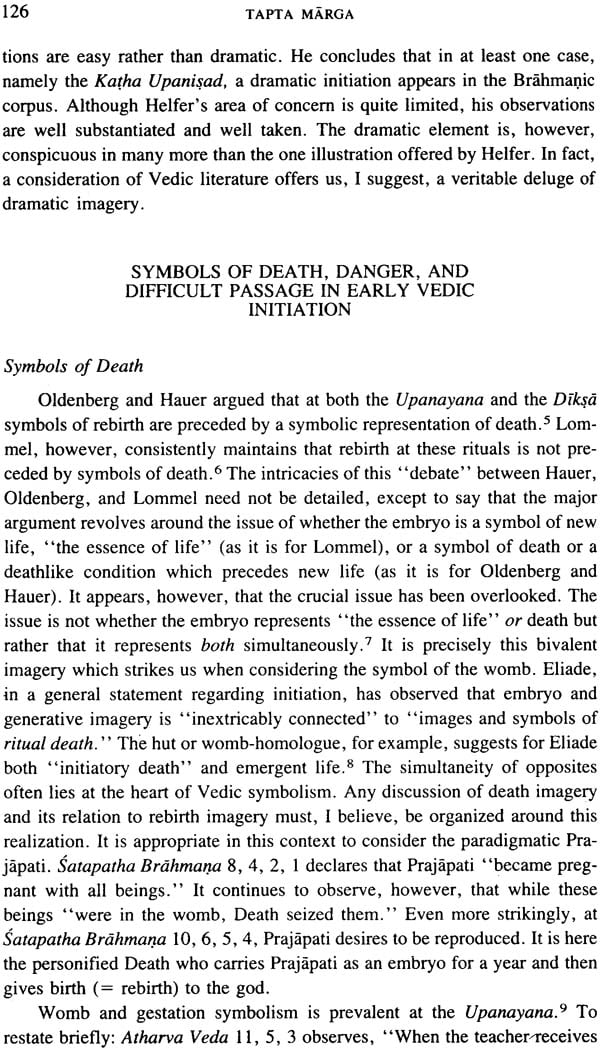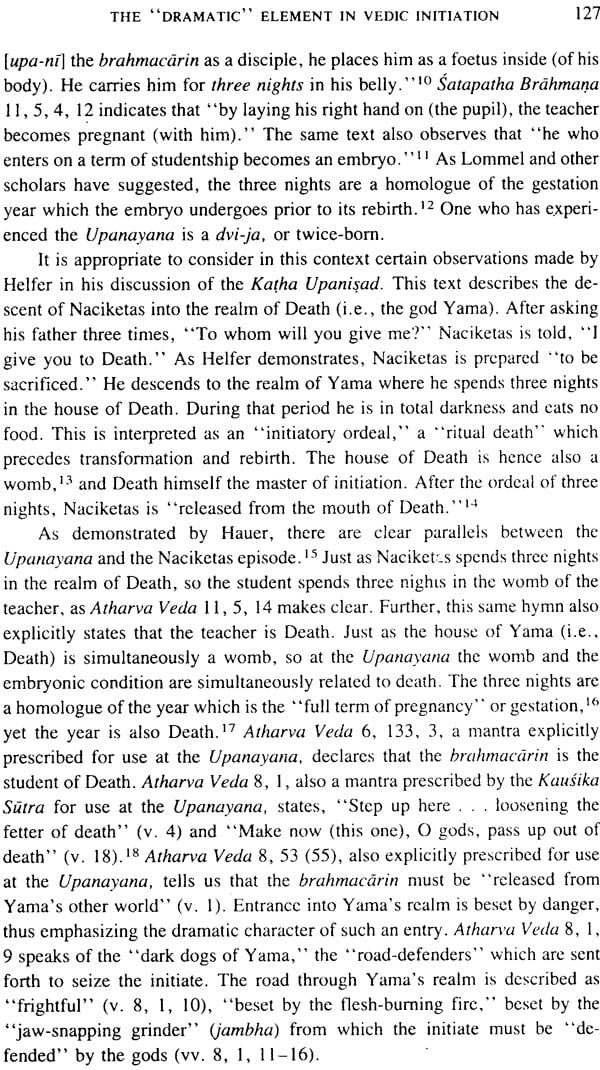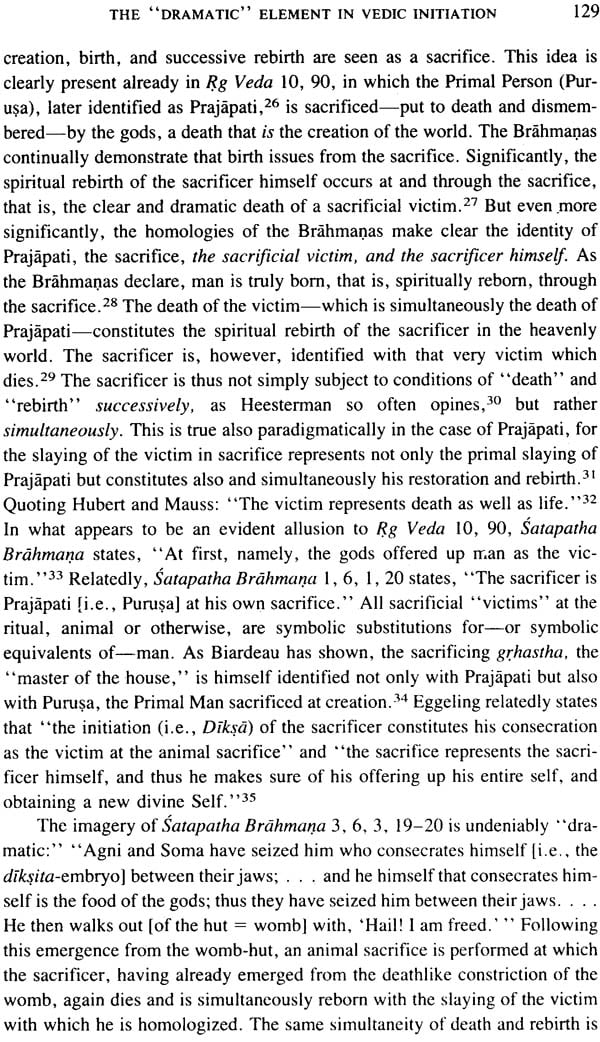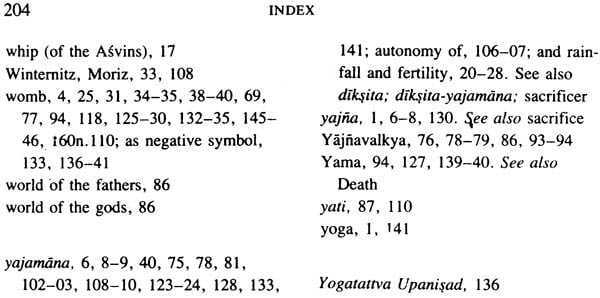
Tapta Marga – Asceticism and Initiation in Vedic India
Book Specification
| Item Code: | IHL606 |
| Author: | Walter O. Kaelber |
| Publisher: | Sri Satguru Publications |
| Language: | English |
| Edition: | 1990 |
| ISBN: | 8170302374 |
| Pages: | 114 |
| Cover: | Hardcover |
| Other Details | 8.8 inch X 5.8 inch |
| Weight | 350 gm |
Book Description
“Kaelber takes a subject which looks obscure at first sight, digest, distils, and comments on difficult body of scholarship, and then writes about it in a way that is easily accessible to any beginning reader on the subject while at the same time fresh, abrim with new insights, and a stimulating read for the scholar. He achieves this by persistently showing how tapas, in its many transformations, remains at the center of the mainstream of Vedic religion from its beginnings to its Upanishadic ‘end. I see this book as something we have long needed for the teaching of Hinduism: a goo book with which to introduce students to the continuities of Vedic religion”
Alf Hiltebeitel, George Washington University
This is the most comprehensive study yet made of tapas and of asceticism during the Vedic period. It also explains three other essential components of Vedic thought: sacrifice, homology, and knowledge. These concepts, along with tapas and initiation symbolism, reveal the heart of Vedic religion. Therefore, this study presents a “history of Vedic religion”, organized around the central building blocks of that tradition.
“This is an excellent study of an important topic in the history of Vedic religion. What I like best about the work is the way it reveals the variety of meanings and uses of tapas in different contexts to establish connections between natural, human, and cosmic realities and to maintain continuity between ritual and the path of knowledge. This is a creative’s study that provides important new insights into the basic principles of Vedic religion”.
Thomas J. Hopkins Walter O. Kaelber is Professor of religious studies at Wagner College.
Mircea Eliade introduces his work Yoga: Immortality and Freedom by observing that in the post-Vedic period, "four basic and interdependent concepts . . . bring us directly to the core of Indian spirituality." These basic and interdependent concepts are karma, maya, nirvana, and yoga. Given the interrelated character of these basic elements in the post-Vedic period, Eliade contends that a "coherent history of Indian thought could be written starting from any one of [them] and the other three would inevitably have to be discussed. " Eliade’s work on yoga therefore achieves two objectives. First, it is quite evidently a discussion of the major variations or "forms" of yoga. Second, because yoga is one of the four basic elements of the post-Vedic period, Eliade’s work also presents an integrated picture of post-Vedic religion in general. By dealing with yoga, and relatedly karma, maya, and nirvana, Eliade is able to understand and interpret post-Vedic religion from the perspective of its "center.
Just as the post-Vedic period has its basic and interdependent concepts, its central "inter-entities," so too does the Vedic period itself. l suggest, therefore, that an investigation of five basic elements, namely heat (tapas), initiation, sacrifice (yajna), knowledge (vidya, jnana), and homology (nidana, bandhu) brings us directly to the "center" of Vedic religion. Our central concern is tapas—or more correctly, the Sanskrit root tap and its derivatives. Of the variegated connotations of tapas the most significant is that of "asceticism;" and it is precisely in this context that we find tapas invariably interwoven with initiation. Just as yoga in particular is characterized by an "initiatory structure,"‘* as Eliade emphasizes, so too is asceticism in general. As a consequence, initiation and the multivalent symbols of initiation are for us of great importance; in fact second only to tapas itself. Our concern with tapers and symbols of initiation leads "inevitably," how- ever, to the other basic elements: sacrifice, homology, and knowledge. Al- `4 though these three are not our central concern, their overriding importance in Vedic religion as well as their inextricable connection with tapas and initiation give them a conspicuous place in our presentation. Our primary concern with the history and significance of the variegated forms of tapas should therefore open up to an integrated and unified understanding of Vedic religion as a whole.
| Acknowledgments | ix | |
| Introduction | 1 | |
| The Vedic Inter-entities: An Overview | 2 | |
| Observations on Method | 10 | |
| 1. | Tapas, Rainfall, and Fertility | 15 |
| Natural Heat: Sun and Fire | 15 | |
| Ascetic Heat: The Brahmacarin | 17 | |
| Ritual Heat | 20 | |
| 2. | Tapas, Birth, and Spiritual Rebirth. | 29 |
| Tapas and Procreation | 30 | |
| Tapas and Spiritual Rebirth | 33 | |
| 3. | Tapas and Purification | 45 |
| Tapas: Destructive Heat and Purification | 45 | |
| Tapas: Pain, Asceticism, and Purification | 49 | |
| Tapas: Penance and Purification | 53 | |
| 4. | Tapas, Knowledge, and Spiritual Rebirth | 61 |
| “In the Beginning” and “On High” | 62 | |
| Now and Here Below | 64 | |
| 5. | A Vedic Watershed: Karma/Jnana | 73 |
| 6. | Tapas, Knowledge, and Liberation | 83 |
| Tapas and Knowledge in the Principle Upanisads | 83 | |
| Homology, Meditation, Liberation | 93 | |
| 7. | The Emergence and Development of Brahmanic Asceticism | 101 |
| Heuristic Models | 101 | |
| The Brahmacarin | 109 | |
| 8. | The “Dramatic” Element in Vedic Initiation | 125 |
| Symbols of Death, Danger, and Difficult Passage in Early Vedic Initiation | 126 | |
| The Doctrine of Transmigration and its impact on initiation symbolism | 133 | |
| Conclusions | 143 | |
| Notes | 149 | |
| General Works and Translations Cited | 189 | |
| Index | 195 |























